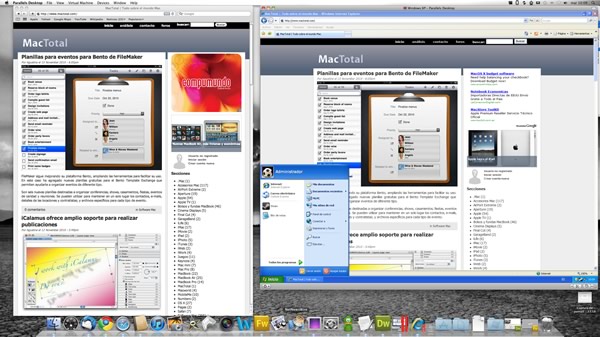

VMware delivers another option to accessing files between operating systems with its support for drag and drop of files and folders between virtual machines and Mac OS X. The shared folders technique used in both applications is solid, though it took me a couple of reinstalls of the VMware Tools to get this to function properly in Fusion.
#Parallels versus vmware mac os x
With their respective tool sets installed under Windows, users can easily move between the Windows and Mac OS X environments. Most users will find both Fusion and Parallels easy to use and will probably never even need to adjust the configuration settings from their defaults. Fusion also supports network boot from a Windows PXE server, which Parallels does not.Īlthough Parallels boots consistently, Fusion is prone to the occasional unexplained Windows boot failure (generally resolved by simply rebooting the virtual machine). For its part, Parallels manages these features through a virtual machine configuration dialog. One difference is that Fusion provides you with a virtual BIOS configuration tool that can be used to change boot options such as the order in which the virtual machine searches for a bootable drive. But Parallels has been working harder, while VMware seems to have ramped down promotion and barely even mentioned this update to the press.The boot process for virtual machines created with either Parallels or Fusion is essentially the same as the boot process for an actual PC. VMware and Parallels have spent six years vying for dominance, each leapfrogging their rival with new features and increased performance. In Parallels' case, this integration is ironically muddied by an additional Crystal Mode: the difference between the two is not clear. These days, both Fusion and Parallels mix well with Windows, in their Unity and Coherence modes respectively. On its debut, Fusion was well received for its stability and advanced Windows integration. Parallels is priced at $79.00, or $49.00 as an upgrade from the two previous versions. There's support for Windows 9 but, given the Mac's lack of compatible hardware, there's no touchscreen distraction. New features include the ability to expand video performance with up to 2 GB of video memory. You can toggle power-saving on a per-VM basis from the Settings panel.

This is noteworthy, since Parallels 9 has a more frugal power mode to ease the battery burden of this processor-intensive software. Notifications now pop up for certain actions, such as when taking a MacBook off mains power. Its Desktop 9 software officially supports OS X Mountain Lion, including full-screen mode and the new Retina displays. Parallels' core business is running Windows in OS X.

We took a closer look at these two powerful applications to see how they compare in their latest respective versions: Parallels 9 and Fusion.
#Parallels versus vmware for mac
There are three clear options: the open-source and free but limited VirtualBox, or one of the two commercial packages, Parallels Desktop 9 for Mac or VMware Fusion.Įither of the latter are easier to work with than VirtualBox, with broadly similar qualities and very decent performance.

Whether you are Running Windows 8 or Windows 7 on a Mac or a MacBook it is simple with virtualisation software, so you need never have to reboot to switch operating systems again.


 0 kommentar(er)
0 kommentar(er)
